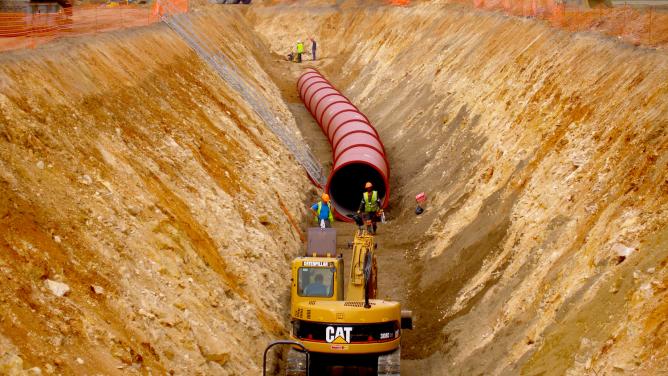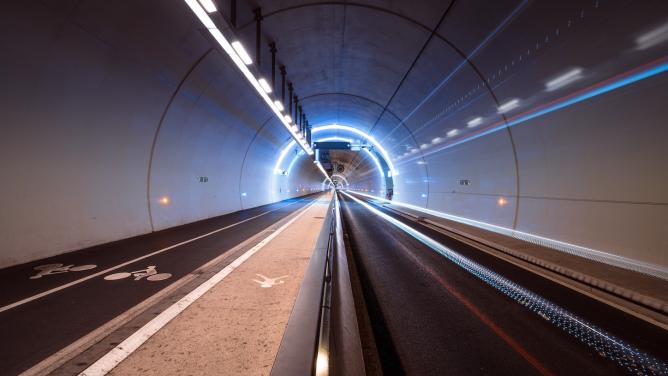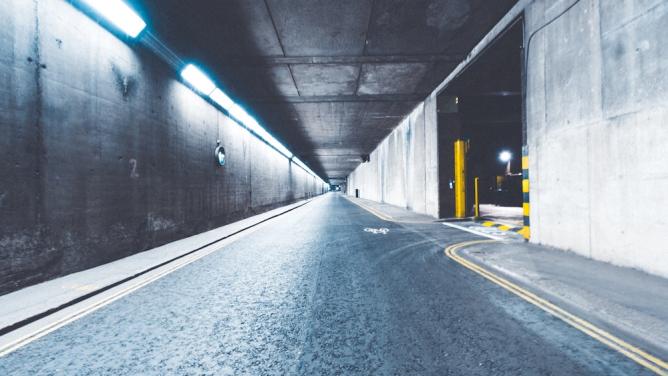Tunnels convey a whole series of obscure representations. Just take the Paleochristian catacombs which house the dead, or the mines in Zola’s Germinal which are depicted as a cavernous hell. In film and literature, the subterranean world is one for pariahs and outcasts. In spite of that, tunnels are synonymous with urban living. While the term is relatively recent (1825), builders never knew how to do without galleries and mines which run under cities or cut through mountains. Because, above all, tunnels are practical: they hide, protect and transport. In our modern, high density cities, they offer a multitude of promising solutions. By reducing pollution, traffic and capacity above ground, the tunnel is looking to restore its image.
Reinventing the tunnel
Over in Naples, the city’s 16 Art Stations make up what is undoubtedly the biggest underground modern art gallery in the world. English-Egyptian designer, Karim Rashid, was given carte blanche over at Università metro station. Meanwhile, Garibaldi station was designed by French architect Dominique Perrault and is a multi-modal transport hub as well as a museum… Here, like in many other cities, reinventing the tunnel is about recycling an existing infrastructure, bringing it back to life in another form.
In New York, the Lowline is taking an opposite approach to what a tunnel can be, with this urban park project right inside Delancey Street subway station. The space the size of a football pitch is currently unoccupied. However, it will soon give way to a mixture of wooden pathways for people to circulate, as well as shops and restaurants too. Everything will be lit by the sun’s light thanks to a fibre-optic system that filters sunlight from above. Meanwhile in Paris, 22 subterranean spaces were the subject of a major renovation competition as part of the second edition of Réinventer Paris. Unsurprisingly, a number of these spaces were tunnels. Palais Royal-Musée du Louvre Galerie Valois will be home to a new cultural venue. Henri IV tunnel will be transformed into a “service station for soft mobility and a place for sport”. Meanwhile, the old Croix-Rouge metro station will be brought back to life with restaurants and a local farmers’ market.
Apart from being spaces for socialising and spending, infrastructure with production functions are not to be outdone. Farming is going underground in Paris. The startup Cycloponics specialises in reconverting abandoned underground space and has set up shop in an old underground car park in the 18th arrondissement. It created La Caverne, Paris’ first organic urban farm which today grows fruit and vegetables. In the world of logistics, the London startup Magway is aiming to deliver more than 600 millions packages a year by making use of more than 850km of decommissioned gas pipelines in the capital. The heads of the startup are confident – and they don’t hide their ambition, which is to cut current carbon dioxide emissions from delivery vehicles by a third! Over in Switzerland, the Cargo Sous Terrain project is less ambitious but more advanced: it plans on connecting production and logistics hubs to city centres. The first 70km-long section linking Härkingen-Niederbipp to Zurich is set to be ready by 2031.
New tunnels with new functions?
According to Alan McKinnon, professor in logistics at Kuehne Logistics University, Magway’s solution which uses existing pipelines is rather utopian. Even the startup makes no bones about it, as it will have to build its own network of tunnels. Apart from reconverting existing pipelines, certain disruptive innovation requires new infrastructure to be built.
The most famous – and controversial – example is undoubtedly that of The Boring Company. In characteristic style, Elon Musk stirred up a hornets’ nest by declaring his ambition to dig tunnels 10 to 15 times faster than traditional methods. Designed to house self-driving cars, his tunnels have a smaller diameter than traditional road tunnels and were created inspired by techniques used to dig sewerage systems. Just like all of the American billionaire’s ideas, it is currently hard to say whether it’ll be revolutionary. Nonetheless, he’s already dug 1.14 miles of tunnels in Las Vegas, with the test ride attracting numerous journalists and industry professionals from all over the world.
Urban tunnel networks are complicated, costly infrastructure. Apart from boasting ambitious promises as to their uses, scalability often remains the biggest hurdle. In this respect, transporting waste via tunnels is a representative example. Despite being long hailed as a miracle solution, the system has never really taken off. Although useful, experiments with waste disposal systems carried out at Walt Disney World and on Roosevelt island in 1969 never swept the country. Nonetheless, there has recently been renewed interest in pneumatic systems, especially in some of the most densely populated (and richest) cities in the world. Swedish company Envac is the market leader, handling 20% of Stockholm’s waste and is already present in more than 44 cities. So it appears like we haven’t heard the last of tunnels just yet.


